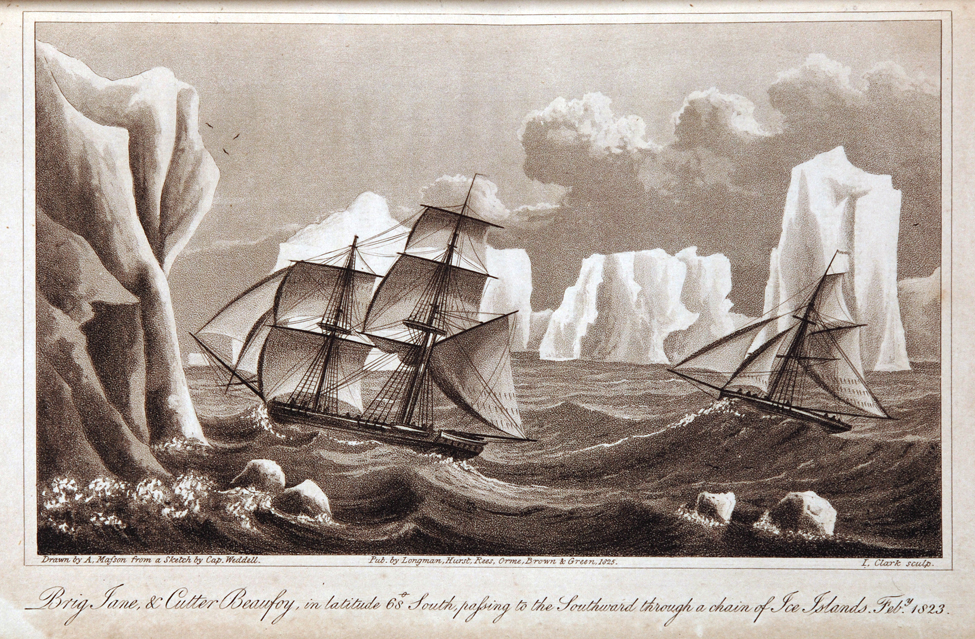Case 2
- Exploring the unknown south

James Weddell. A Voyage Towards the South Pole, Performed in the Years 1822–24
The period after Captain Cook’s 1773 voyage saw little in the way of Antarctic exploration, save for the discovery of the South Shetland Islands by William Smith (1790–1847) in 1819. Mainland Antarctica remained undiscovered until the Russian explorer Fabian Gottlieb von Bellingshausen (1778–1852) sighted it from his lead ship the Vostok on 28 January 1820. Bellingshausen’s discovery was followed by numerous expeditions throughout the nineteenth century, culminating in the start of the ‘Heroic Age of Antarctic Exploration’ towards the end of the 1800s.
One of the early nineteenth-century explorers was the British navigator and sealer James Weddell (1787–1834). His account in A Voyage Towards the South Pole is that of his third and most successful Antarctic voyage when, after unsuccessfully searching for land between the South Shetlands and South Orkneys, Weddell turned south, and in 1823 reached the southernmost longitudinal position any ship had ever reached before.

Elie Jean Francois le Guillou. Autour du Monde de l’Astrolabe et de la Zélée, sous les Ordres du Contre-Amiral Dumont-d’Urville. Paris: Berquet et Pétion, 1843.
The British and Russians were not the only European powers seeking fame and wealth in the Antarctic region. France conducted its first Antarctic expedition in 1771–1772, which claimed vast territories but made no significant discoveries beyond the Kerguelen Islands. The 1837–1840 second French expedition, under Jules Dumont d’Urville (1790–1842), was far more successful. D’urville led the first experiments to try and determine the location of the south magnetic pole, gathered mineral and animal samples, and charted part of Antarctica’s coastal area, which he named the Adélie Coast after his wife (noted in the paragraph ‘Il faut le dire, l’entreprise était périlleuse’).
Upon his departure, d’Urville plotted a course for Hobart, Tasmania. After visiting the Auckland Islands, his ships weighed anchor in the Otago Harbour from 30 March to 3 April 1840.

Elie Jean Francois le Guillou. Autour du Monde de l’Astrolabe et de la Zélée, sous les Ordres du Contre-Amiral Dumont-d’Urville. Paris: Berquet et Pétion, 1843.
Open image in new window


